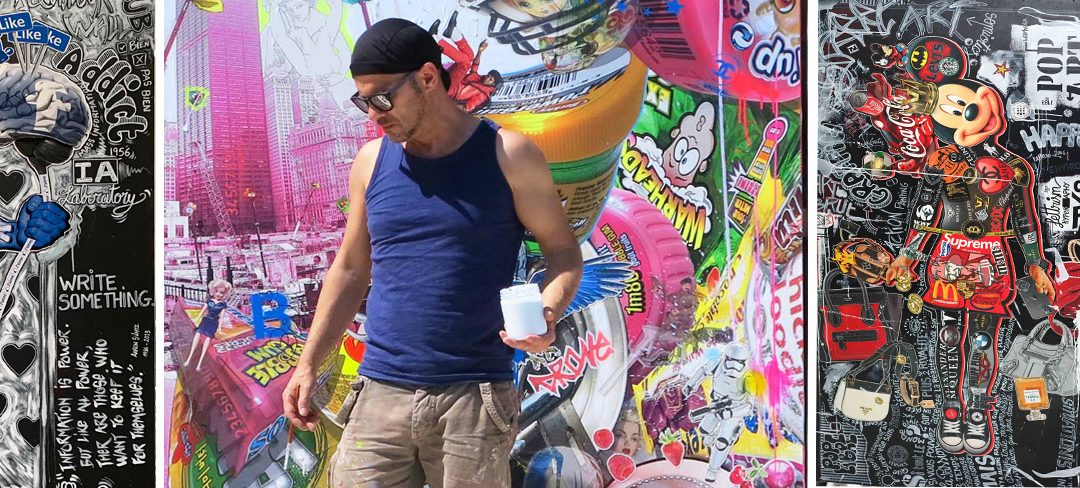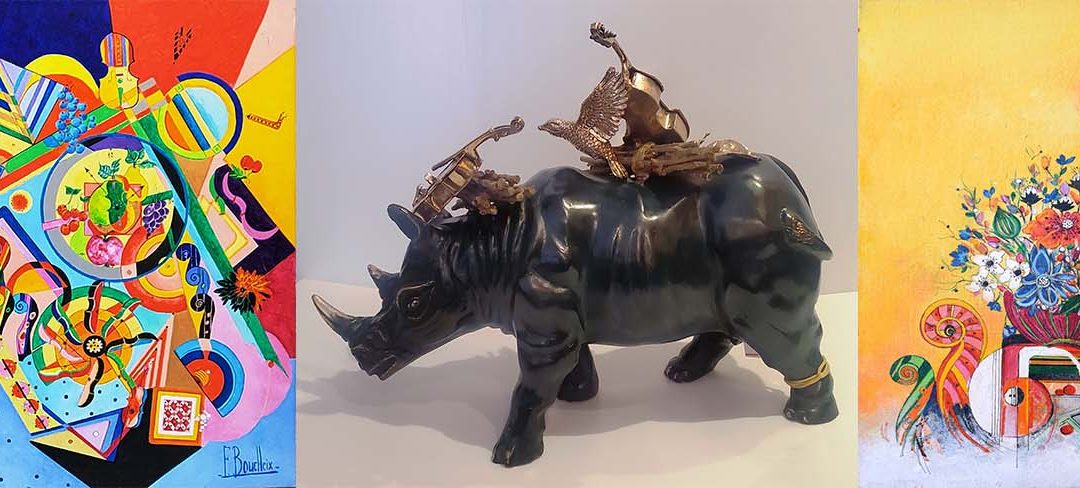Julien Garcia or artistic retraining Nature,...

CINTRACT
Cintract David was born in 1970.
Halfway between Warhol and Lichtenstein, the artist projects his vision of consumer society on all media : paintings, dolls or mannequins.
While paying tribute to the great artists Pop, David Cintract has stood out thanks to his strong personality, becoming a key figure in the movement that he founded: “The Pop free.”
David Cintract has a fascination for the exuberant sculpture and storage works so “Aladdin’s cave”.
Inspired by current events and social issues, his work carries with it the ambiguity of a quirky, childlike artistic universe, the tinted optimism tragedy.
Gaiety of colors and patterns, sparkle and communicative joy, but also depth of questions and symbols, such is the David Cintract trademark of refusing ease and laying discrete connections between very poetic forces and darker impulses.
Using techniques as diverse as oil, photo, inclusion or digigraphie, it develops on all media (paintings, models, cars …) several themes at the heart of our postmodern society:
-L’homme Face a frantic and frivolous consumption
-The Place of the fantasies and erotic adult games
-The Loss of our part of childhood in a society that no longer believes in dreams
David Cintract sets worldwide and, thanks to its universal artistic language, nourishes deep exchanges with audiences from all backgrounds and all cultures.
Interview by Mr DAVID CINTRACT LIVE:
“My art reigns in me, but does not rule me”
DJ image and matter, David Cintract is defined as a visual artist and existential touch.
Multisensory, it passes with disconcerting ease of traditional painting techniques with modern technologies such as digigraphie, photography, the inclusion of other products / toys …
Through its mannequins that “dandyse” its Mutantoy’s Candy Box and he makes of individuality in the manufactured and deposited his poetry in the series of objects.
Q: “Is being an artist is obvious to you”?
Art and philosophy are to me the best way to aesthetize my existence. With these two means of expression and reflection, I was able to optimize my tragic optimism and reverse the general neuroticism contemporary works. My wish is to deal with company or topical subjects more or less serious, and to attempt a democratic and positive transcription. For me it is a fun way to play with images and frivolous objects that recall childhood with filigree the finding of a report obsession we have with frivolous consumption, fueled by advertising constantly renewed. This work brings me also to wonder if happiness would not exhausted the pleasure of consumption



